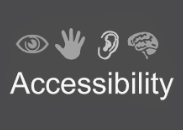Automobiles these days have got more advanced, so have their features and accessories like smart and interactive touch screen stereos. These car stereos are usually designed with capacitive or resistive touch screens, but they have got their own pros and cons. Sometimes it is difficult to find the right technology aligned to the specific needs.
Here’s a head to head comparison between Capacitive and Resistive Touch Technology to find which one could be a better option for your car stereo’s design.
User Experience:
It is always about offering an exceptional experience to the end-user, for which capacitive touch screens become the ideal choice. Car stereos with capacitive touch screens are much more responsive and convenient to use in comparison to resistive touch screens. In resistive touch technology, the user needs to press the screen with a moderate amount of pressure to register a touch.
For a quality car stereo with fluid use, easy installation, and a responsive touch screen, capacitive technology is the best one.
Durability:
In terms of durability, both resistive and capacitive are similar. Regular resistive does use a polyester film front surface which can be more easily damaged than capacitive which used glass unless you use a glass armored resistive sensor such as A D Metro’s Ultra resistive which gives you the durability of a glass faced touch screen.
Sensitivity:
Capacitive touch screens are more sensitive when compared to resistive one. Resistive touch screens require more pressure, and thus the responsiveness is less.
Picture Quality:
When it comes to sharp and clear picture, capacitive touch screens get the thumbs up. The picture quality of a touch screen application depends on light transmission capacity of the display. And capacitive touch screens offer a bright and clear transparency.
In comparison to capacitive touch screens, the picture quality of resistive touch screens is impeded somewhat by the glossiness of the ITO conductive layers which increase reflectivity.
Input Methods:
Resistive touch screens offer several input methods which include bare or gloved finger, nails or stylus. But there’s a limitation in capacitive touch screens as it has only two input methods. You can use a finger or a special capacitive stylus for operation. Heavily gloved hands or a regular stylus won’t work.
Price:
An important part is the price of touch screen technology. Resistive touch screens are more economical, whereas capacitive touch screens are costlier to use for car stereos. In fact, capacitive touch screen technology is 4 to 5 times costlier than resistive touch technology. Thus, if there’s a budget limitation, resistive touch screens would be the best option for car stereos.
Conclusion:
Touch screen selection for an application totally depends on an individual’s preference. If your concern is picture quality, smooth user experience and responsiveness, capacitive touch screens will be a good to go for choice. However, if you are ready to compromise some of these features and want to offer car stereos with durable and economical displays, choose resistive touch screens.
However, several innovations in touch screen technology have expanded the choice list. You can get in touch with top manufacturers like A D Metro for other better options that include Projected Capacitive touch screens and armored ULTRA resistive touch screens.
A D Metro’s ULTRA resistive touch screens offer the most durable and reliable touch solutions, and designed to be scratch, abrasion, water and chemical resistant. They are made of patented durable borosilicate glass surfaces while maintaining the advantages of resistive technology.
On the other hand, PCAP touch solutions are used in a wide range of applications. Particularly, a PCAP innovation by A D Metro includes a patented group controller to serve different screen sizes and simplify the design to reduce inventory costs. Also, am integrated chip-on-flex design is available that integrated the controller onto the flextail which provides a lot of space saving particularly useful in compact designs. A D Metro has also provided another major innovation to the market called “ARGON”. This smart PCAP controller can program itself when connected to any size of sensor, easing the need to program the controller to match the sensor size, orientation, number of simultaneous touches allowed etc.







